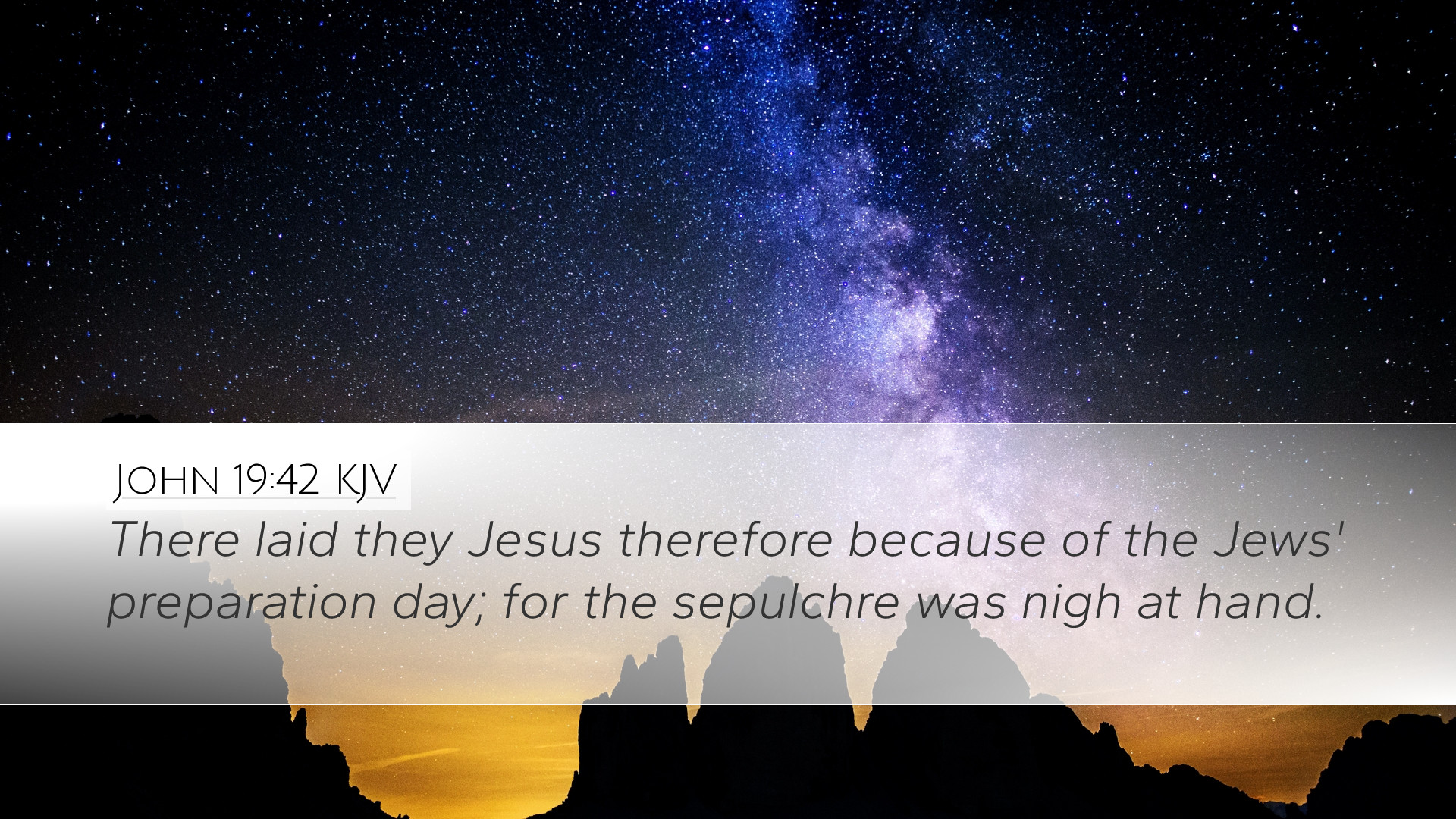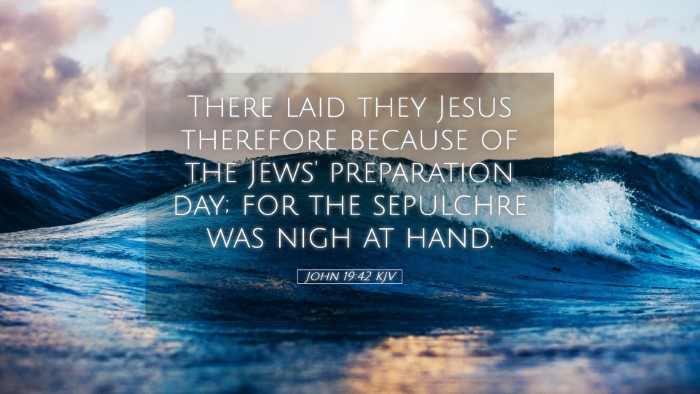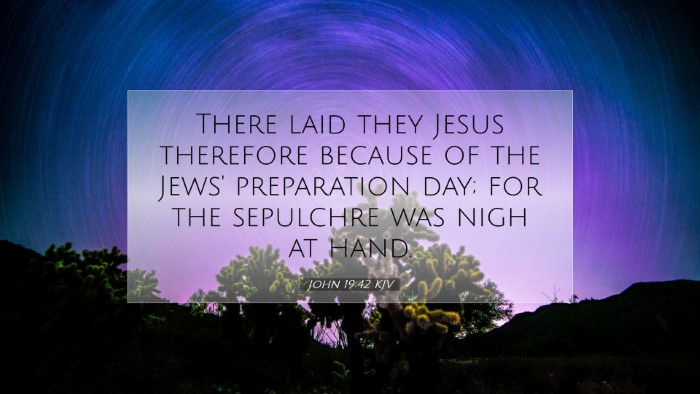Commentary on John 19:42
John 19:42 states, "There they laid Jesus therefore because of the Jews' preparation day; for the sepulchre was nigh at hand."
This verse captures a pivotal moment in the narrative of the Passion of Christ, as it outlines the events surrounding the burial of Jesus. It provides essential insights into the nature of His death and burial, as well as the fulfillment of prophecy and theological implications.
Overview and Context
The Gospel of John presents a unique perspective on the events surrounding the crucifixion. In the preceding verses, we see the culmination of the trial of Jesus, His unjust condemnation by both the Roman authorities and the Jewish leaders, and the ensuing crucifixion. John 19:42 fits into the larger context of Jesus’ death and burial, highlighting the significance of the timing and the preparation of His burial place.
Preparation Day
The phrase "the Jews' preparation day" refers to the day before the Sabbath, which was crucial in Jewish law. According to tradition, the Sabbath began on Friday at sunset, making it imperative for the Jews to properly prepare for the Sabbath rest. This requirement for preparation illuminates the urgency of burying Jesus before the onset of the Sabbath. Matthew Henry notes that the Jewish leaders were concerned about defiling the Sabbath by leaving a crucified body on the cross, thus fulfilling their legal and ceremonial obligations while simultaneously demonstrating their disregard for the sanctity of justice shown towards Jesus.
Nearby Sepulchre
The text continues with “for the sepulchre was nigh at hand”, indicating that Jesus was buried close to the scene of His crucifixion. Albert Barnes elaborates that this proximity served multiple purposes: it facilitated timely burial, allowed for the fulfillment of Old Testament prophecies, and emphasized Jesus' identification with humanity's suffering. The Gospel emphasizes that He was buried not far from where He was executed, highlighting the reality of His death.
Theological Implications
The burial of Jesus is significant not only for its historical context but also for its theological ramifications. The act of burial is linked to Christ’s real and physical death, which lays the groundwork for the doctrine of the resurrection. Adam Clarke emphasizes that Jesus' burial reinforces the belief in His bodily resurrection, as it was critical that He genuinely died and was then laid in a tomb.
Fulfillment of Prophecy
The burial of Jesus fulfills multiple prophecies outlined in the Old Testament. Isaiah 53:9 states that the Messiah would be with the rich in His death, and Joseph of Arimathea, who provided the tomb, was a wealthy man. Matthew Henry offers insight into how this was not merely coincidental but rather a fulfillment of God’s sovereign plan, weaving together the threads of human actions, including those of the Jewish leaders and Joseph.
Implications for Believers
For contemporary believers, John 19:42 serves as a reminder of the seriousness of sin and the magnitude of Jesus' sacrifice. The willingness of Jesus to undergo such indignity culminates in our understanding of grace. Pastors and theologians can preach about the transformative power of His death and the hope found in His resurrection, illustrating the victory over sin and death.
Questions for Reflection
- How does understanding the context of Jesus’ burial affect my view of His crucifixion and resurrection?
- In what ways does the urgency to bury Jesus resonate with my life and responsibilities?
- How should the fulfillment of Old Testament prophecy encourage my faith in Christ?
Conclusion
John 19:42 encapsulates the gravity of Jesus' burial within a deeply significant context. It prompts believers to reflect on the profound implications of Jesus’ death and burial while celebrating the hope that flows from the resurrection. This verse is crucial for understanding the entirety of the Gospel and should be a focal point for pastors and scholars alike, as they explore the depths of Christ's sacrifice and its implications for humanity's redemption.


